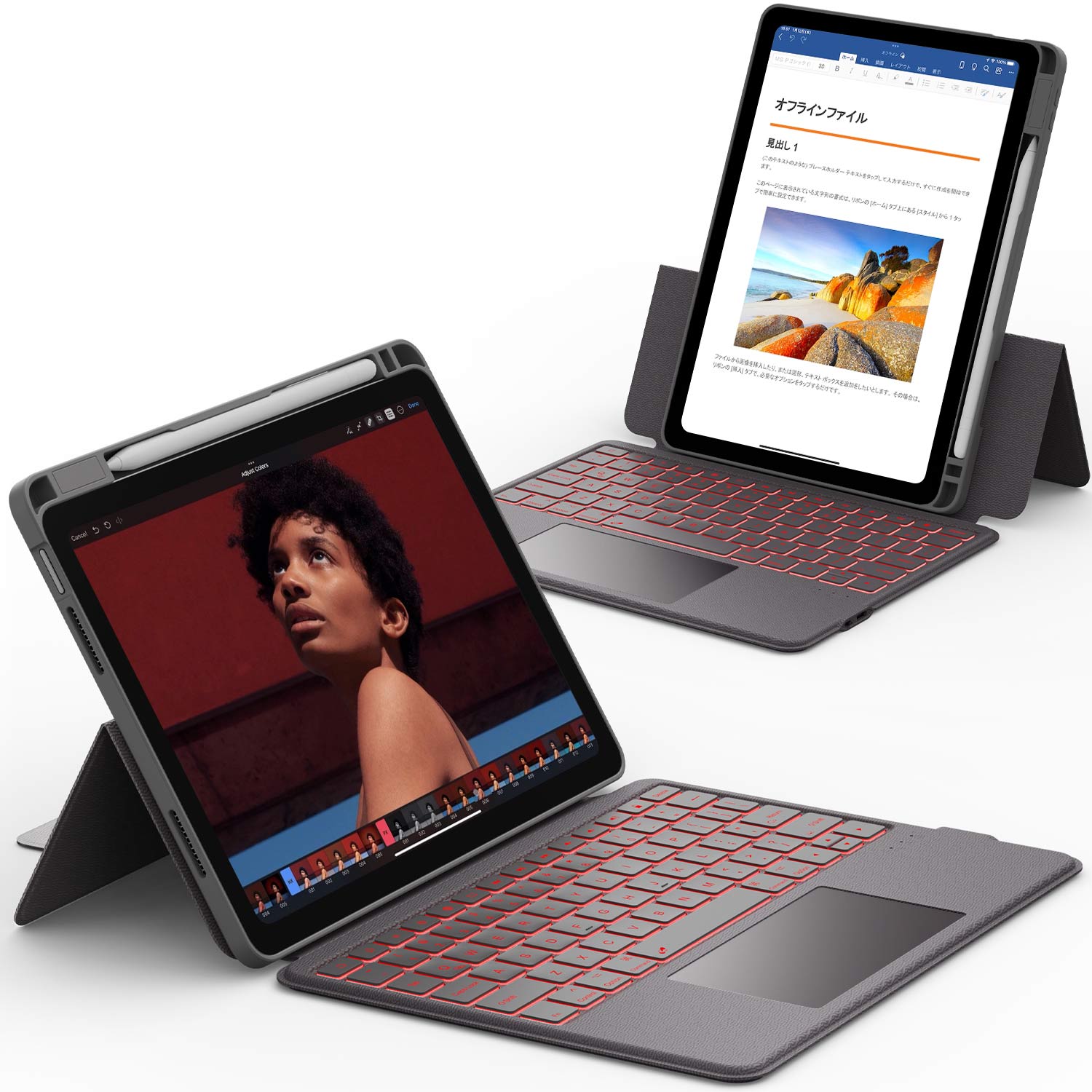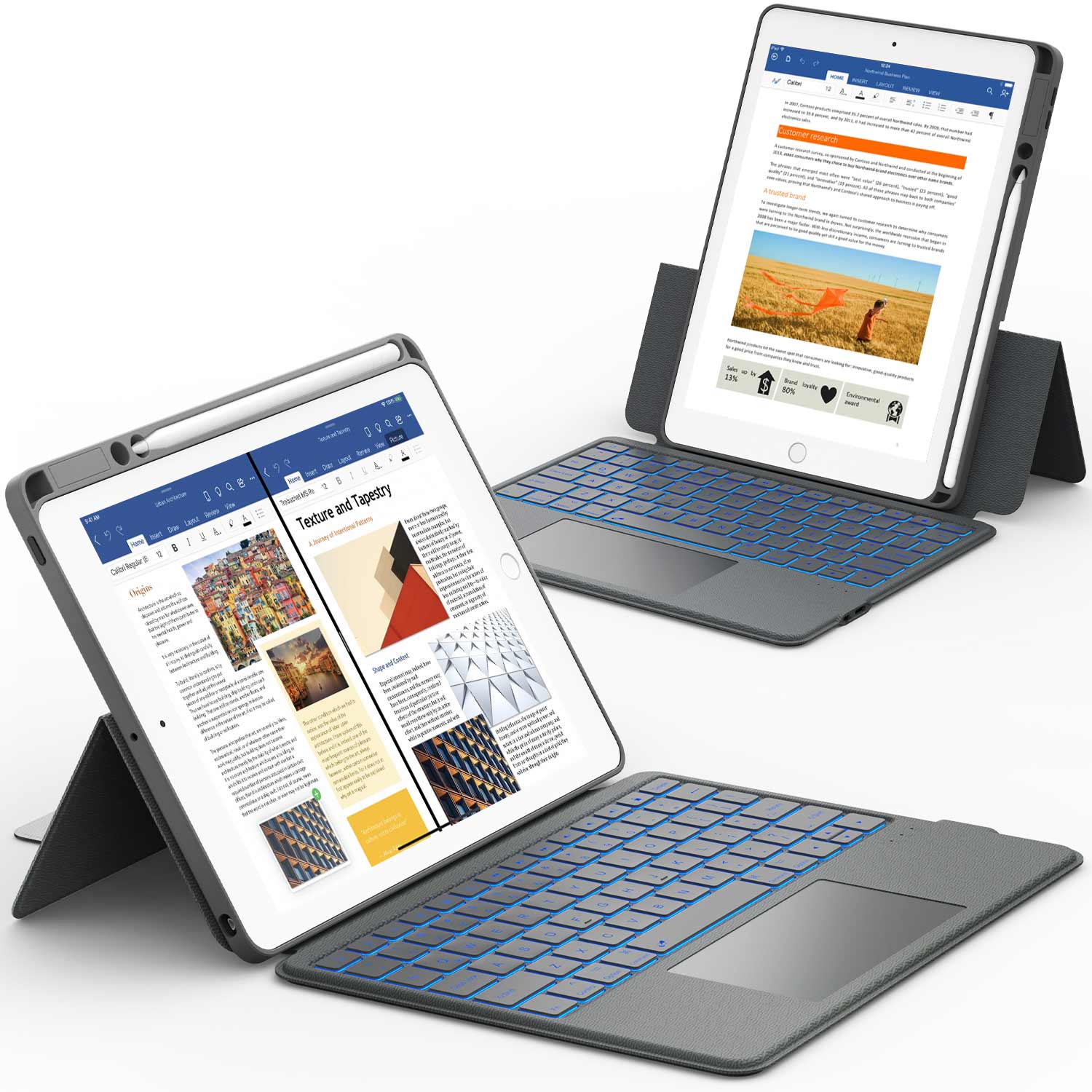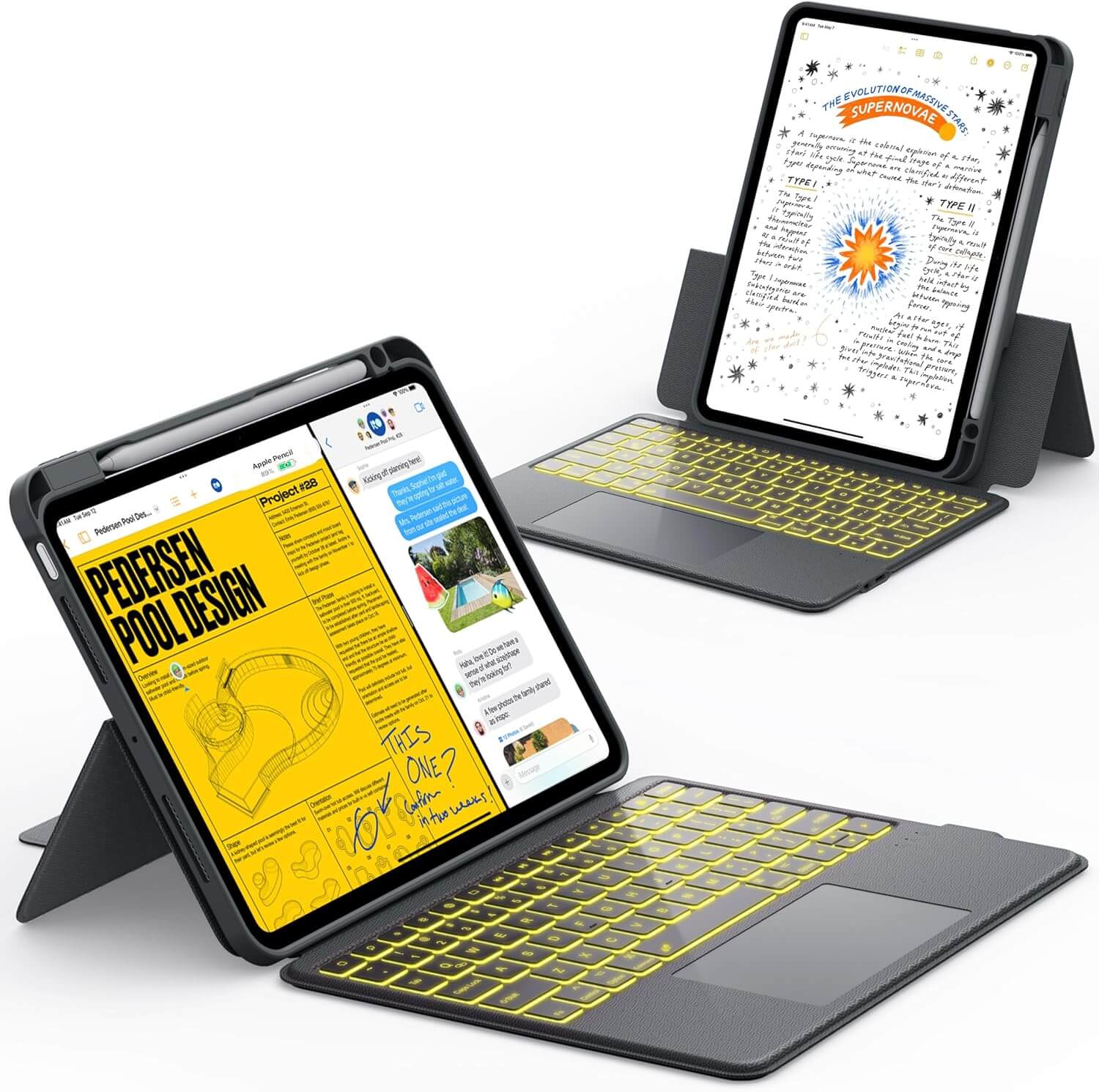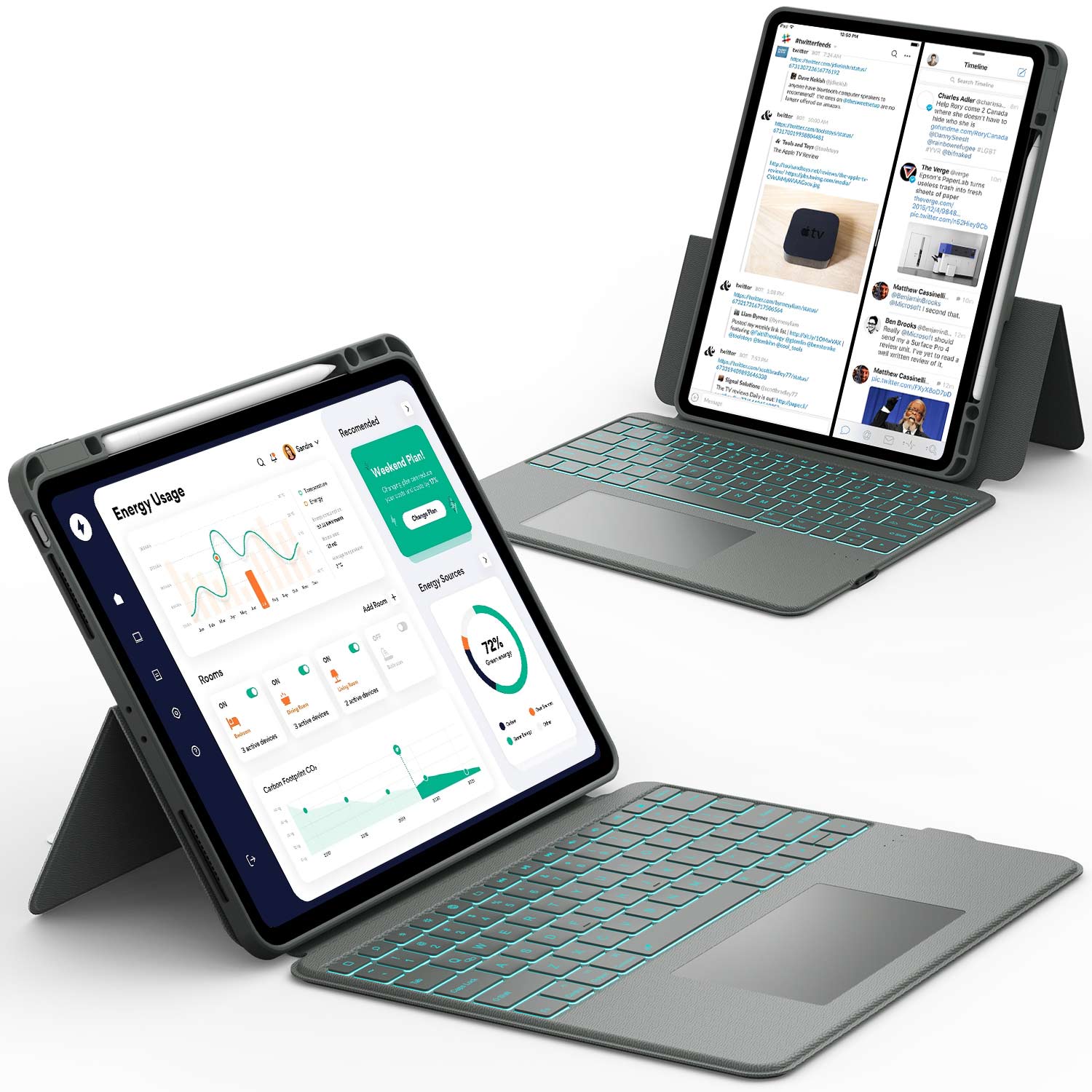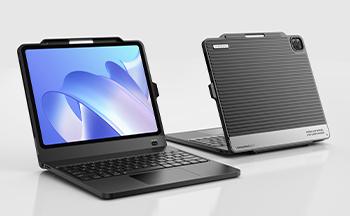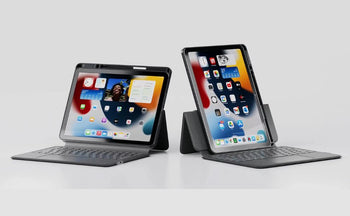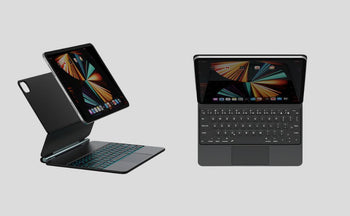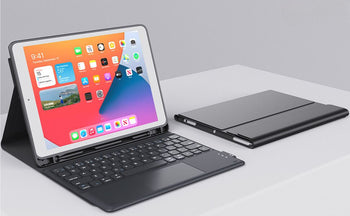Deciding between an iPad and a Samsung tablet can be pretty tricky. Both brands offer some really good devices, but they do different things well. Are you looking for something powerful for work, or maybe just a tablet for watching movies? Do you care more about a super clear screen or a battery that just keeps going? This article will help you sort through all the options and figure out which tablet gives you the most for your money. We'll look at how they perform, what they offer for creative tasks, and how they fit into your daily life.
Key Takeaways
- iPads usually get software updates for a longer time, which means they stay useful longer.
- Samsung tablets often come with the S Pen included, while Apple charges extra for the Apple Pencil.
- Samsung devices tend to have more flexible storage options, like SD card slots, which iPads don't offer.
- iPads often have stronger processors, making them better for really demanding tasks like video editing.
- Samsung tablets often use OLED screens, which give you deeper blacks and more vibrant colors, great for watching movies.
Overall Value Proposition

What You Get for Your Money
Okay, let's break down what you actually get when you shell out your hard-earned cash for either an iPad or a Samsung tablet. It's not just about the device itself, but the whole package. With iPads, you're often paying a premium for the brand and the ecosystem. You get access to iPadOS, which is pretty slick, and a ton of apps optimized for tablets. But, you might find yourself needing to buy accessories like the Apple Pencil separately, which adds to the cost. Samsung, on the other hand, often bundles in the S Pen, which is a nice perk. Plus, they tend to be a bit more aggressive with pricing, especially on their mid-range models. So, you might get more bang for your buck initially. It really boils down to what you prioritize: brand prestige and a curated app experience versus potentially more features for less money upfront.
How Long Each Tablet Will Last
Tablet longevity is a big deal, right? You don't want to drop a bunch of money on something that's going to be obsolete in a couple of years. Apple has a solid track record with software updates. They support their devices for a long time, often 5+ years. This means you'll get the latest features and security patches, which keeps your tablet running smoothly and securely. Samsung's update policy has improved, but it's still not quite on par with Apple. You'll likely get several years of updates, but maybe not as many as you would with an iPad. Also, consider build quality. Both iPad and Samsung tablets are generally well-made, but how you treat them matters too. A case and screen protector are always a good idea to extend the life of your device. Ultimately, the lifespan depends on a mix of software support and how well you take care of it.
Price Comparison Across Models
Let's talk numbers. The price range for iPads and Samsung tablets can vary wildly depending on the model and storage capacity. Apple tends to have a higher starting price, especially for the base models. You can find some good deals on older generations, but the latest and greatest will cost you. Samsung offers a wider range of price points, with some budget-friendly options that are surprisingly capable. Here's a quick look at some approximate price ranges:
- iPad (base model): $329 - $499
- iPad Air: $599 - $749
- iPad Pro: $799 - $1099+
- Samsung Galaxy Tab A series: $149 - $279
- Samsung Galaxy Tab S series: $649 - $849+
Keep in mind that these are just estimates, and prices can fluctuate. Also, factor in accessories like keyboards and styluses, which can add a significant chunk to the overall cost. Don't forget to check for best deals and discounts!A keyboard can make your iPad or
Samsung tablet even more versatile for work or study. The Chesona Tablet Keyboard offers seamless compatibility, responsive keys, and a budget-friendly price. Check it out at Chesona’s website to enhance your tablet experience!
Performance and User Experience
Speed and Power Comparison
When it comes to raw power, iPads have typically held an edge. Apple's silicon, especially the M-series chips, are known for their impressive performance. You'll notice this difference if you're doing heavy video editing or playing demanding games. Samsung tablets, while generally very capable, often use Snapdragon or Exynos processors, which are great for everyday tasks and multitasking, but might not match the iPad in intense workloads. Here's a quick look at benchmark scores:
| Benchmark | Samsung Galaxy Tab S10 Ultra | iPad Pro M4 |
|---|---|---|
| Processor | MediaTek Dimensity 9300+ | Apple M4 |
| Geekbench 6 Single-Core | 2171 | 3700 |
| Geekbench 6 Multi-Core | 7246 | 14523 |
| 3DMark Wild Life Extreme | 5256 | 8529 |
Screen Quality and Display Features
Samsung has really pushed the boundaries of display technology in their tablets. They often feature vibrant AMOLED screens with incredible color accuracy and deep blacks. This makes them fantastic for watching movies or viewing photos. iPads, on the other hand, offer excellent color accuracy and brightness, and their Pro models often include ProMotion technology for a super smooth 120Hz refresh rate. Ultimately, it comes down to personal preference: do you prefer the punchy colors of AMOLED or the more natural look of an iPad's display? If you're looking for superior entertainment experiences, Samsung might be the way to go.
Operating System Differences
This is where the user experience really diverges. iPadOS is known for its simplicity and ease of use. It's very intuitive, especially if you're already in the Apple ecosystem. The app selection is also very strong, particularly for creative professionals. Android on Samsung tablets, with the One UI skin, offers a lot more customization options. You can tweak almost anything to your liking. Plus, Android gives you more flexibility when it comes to file management and sideloading apps.
Choosing between iPadOS and Android really depends on what you value most. Do you want a streamlined, user-friendly experience with a focus on creative apps? Or do you prefer a more customizable and open system? Both have their strengths and weaknesses, so think about what matters most to you in a tablet operating system.
Here's a quick comparison:
- iPadOS: Smooth, easy to use, optimized apps. Great for those already in the Apple ecosystem.
- Android (One UI): Highly customizable, more flexible file management.
- App Selection: iPads have more pro/creative apps, while Android allows sideloading.
Productivity and Creative Tools

Stylus Functionality: S Pen Versus Apple Pencil
When it comes to stylus input, both the S Pen and Apple Pencil are great, but they cater to slightly different needs. The Apple Pencil, especially with iPads, is known for its low latency and precision, making it a favorite among artists and designers. The Apple Pencil's compatibility with many design apps is a big plus. On the other hand, the S Pen often comes included with Samsung tablets, which is a cost-saving factor. It also offers features like air gestures, which can be useful for quick actions. Ultimately, the choice depends on whether you prioritize precision and a vast app ecosystem or value convenience and cost-effectiveness.
Multitasking Capabilities
Both iPad and Samsung tablets have stepped up their multitasking game, but they approach it differently. iPads now feature Stage Manager and Split View, allowing users to run multiple apps simultaneously. Samsung tablets, however, offer a more computer-like experience with DeX mode, which transforms the tablet interface into something resembling a desktop. You can open multiple app windows and resize them, which is great for productivity. Samsung's approach might appeal more to users who want a laptop replacement, while iPad's multitasking is more streamlined for tablet use.
Pair your tablet with the Chesona Tablet Keyboard for a laptop-like experience at an affordable price. Visit Chesona’s website to learn more!
App Ecosystem and Optimization
The app ecosystem is where iPads often shine. The App Store generally has more tablet-optimized apps compared to Google Play. Many iPad apps are specifically designed for the larger screen, making them look and function better. While Google Play has a massive selection of apps, many are simply stretched-out phone apps that don't fully utilize the tablet's screen space. For creative professionals, apps like Procreate are exclusive to iPad and often receive updates first. This gives iPads an edge in terms of app optimization and availability of specialized tools.
Choosing between iPad and Samsung for productivity and creative tasks really boils down to your workflow and app preferences. If you're heavily invested in the Apple ecosystem or need specific iPad-only apps, then iPad is the way to go. If you prefer a more open, computer-like experience and value the included S Pen, Samsung might be a better fit.
Target Audience and Use Cases
School and Study Applications
For students, both iPads and Samsung tablets shine, but in different ways. iPads are often favored for their streamlined interface and access to a wide array of educational apps optimized for iPadOS. Samsung tablets, on the other hand, offer more flexibility with file management and multitasking, which can be useful for research and writing papers. The choice really boils down to personal preference and the specific apps or features a student needs.
Professional and Creative Workflows
When it comes to professional and creative tasks, the differences become more pronounced. iPads, especially with the Apple Pencil, have become a staple for artists and designers, thanks to apps like Procreate and Affinity Photo. Samsung tablets, with the S Pen, are also capable creative tools, and some professionals appreciate the open nature of Android for certain workflows.
Entertainment and Gaming
For entertainment, both platforms offer a great experience. iPads have a slight edge in gaming due to the optimization of many games for iOS. Samsung tablets often boast vibrant displays and expandable storage, making them ideal for watching movies and TV shows on the go. Ultimately, the best tablet for entertainment depends on what you value most: a curated gaming experience or flexible media consumption.
Choosing between an iPad and a Samsung tablet really depends on what you plan to use it for. Consider your daily tasks, preferred apps, and how you like to work. There's no one-size-fits-all answer, so think about what matters most to you.
Hardware and Design Considerations

Build Quality and Materials
When you pick up an iPad, especially the higher-end models, you immediately notice the solid build. Apple tends to use premium materials like aluminum, giving them a sturdy and refined feel. Samsung tablets, while also generally well-made, can sometimes feel a bit more plastic-y, especially in their more affordable ranges. This isn't always a bad thing, as it can make them lighter, but it does impact the overall perception of quality. The durability of the screen is also a factor; iPads are known for their scratch resistance, while some Samsung tablets might benefit from a screen protector.
Portability and Size Options
One of the great things about both iPads and Samsung tablets is the variety of sizes available. Apple offers the iPad mini for ultimate portability, all the way up to the 12.9-inch iPad Pro for those who want a larger screen. Samsung mirrors this with their Galaxy Tab A series being smaller and lighter, and the S series offering larger displays. Here's a quick comparison:
- iPad mini: Great for reading and travel.
- iPad Air: A good balance of size and power.
- iPad Pro: For professionals who need a large display.
- Samsung Galaxy Tab A: Budget-friendly and portable.
- Samsung Galaxy Tab S: High-end features in various sizes.
Connectivity and Expandable Storage
Connectivity is where things get a little different. iPads typically stick with a Lightning or USB-C port, depending on the model, and rely heavily on cloud storage. Samsung tablets often include a microSD card slot, allowing you to expand the storage, which can be a big plus if you plan to store a lot of media or large files. Also, Samsung often includes a standard headphone jack, which is missing on many iPads. Here's a quick rundown:
- iPads: USB-C or Lightning port, no expandable storage.
- Samsung Tablets: USB-C port, microSD card slot for expandable storage on many models.
- Headphone Jack: Often included on Samsung tablets, less common on iPads.
Ultimately, the best choice depends on your priorities. If you value premium materials and a sleek design, the iPad might be more appealing. If you need expandable storage and a headphone jack, Samsung tablets offer those advantages. Don't forget to consider the size and weight, especially if you plan to use your tablet on the go. battery health is also a key consideration for long-term value.
Ecosystem Integration and Support

Integration with Other Devices
How well do these tablets play with your other gadgets? That's a big question. Apple's ecosystem is famously tight-knit. If you're already swimming in Apple products – an iPhone, a MacBook, AirPods – the iPad slots in pretty smoothly. Think easy handoff, shared clipboards, and seamless syncing. Samsung's got its own thing going with its Galaxy devices, but it might not feel quite as integrated if you're not all-in on Samsung. It's more open, which some people like, but it can mean a bit more setup.
Software Updates and Longevity
Software updates are a big deal for keeping your tablet secure and running smoothly. Apple tends to support its iPads with updates for a long time – often five years or more. That means your iPad should stay current and secure for longer. Samsung's update policy has gotten better, but it's still not quite as long-lasting as Apple's. You might get three or four years of major updates, plus security patches after that. Something to keep in mind if you plan on holding onto your tablet for a while.
Customer Service and Warranty
When things go wrong, who's got your back? Apple has a reputation for pretty good customer service, with lots of support options like in-store help, phone support, and online chat. Samsung's customer service can be a bit more hit-or-miss, depending on who you talk to. Both offer standard warranties, but it's worth checking the fine print to see what's covered and for how long.
It's worth thinking about what kind of support you value. Do you want in-person help? Are you comfortable troubleshooting online? Your answer might sway you one way or the other.
Here's a quick rundown:
- Apple: Strong ecosystem, long software support, generally good customer service.
- Samsung: More open ecosystem, decent software support, customer service can vary.
- Consider your existing devices and how important long-term support is to you.
Conclusion
So, when it comes to picking between an iPad and a Samsung tablet, it really just comes down to what you need. If you're all about super smooth performance and having a ton of creative apps at your fingertips, then an iPad is probably a good fit. But hey, if you're looking for something more for just chilling, watching movies, and want a price that's a bit easier on your wallet, Samsung tablets are pretty tough to beat. Honestly, no matter which one you grab, both brands give you good stuff and cool features. Just think about how you'll actually use your tablet every single day, and you'll totally find the right one for you.
Frequently Asked Questions
Which tablet is better, an iPad or a Samsung tablet?
Deciding between an iPad and a Samsung tablet really depends on what you need it for. If you like things simple, smooth, and you already own other Apple gadgets, an iPad is probably a good fit. If you like to change things up, want to save some money, or need extra storage space, a Samsung tablet might be better.
Are iPads more expensive than Samsung tablets?
Generally, iPads tend to cost more than Samsung tablets. Apple's basic iPad starts at a higher price, and their fancier models like the iPad Pro can be quite expensive. Samsung has many options, from very cheap ones to high-end ones, so you can often find a Samsung tablet that fits your budget better.
Which tablet is best for students?
For students, both tablets have good points. iPads often have more apps made just for learning and are great for taking notes with the Apple Pencil. Samsung tablets are good for using many apps at once and often come with their S Pen, which is handy for notes and drawing without extra cost.
How long do iPads and Samsung tablets usually last?
iPads are usually known for lasting a long time because Apple gives them software updates for many years. This means your iPad will stay useful and safe for 5 to 7 years or even more. Samsung tablets also get updates, but sometimes not for as long as iPads.
Which tablet has a better screen?
When it comes to screen quality, Samsung often uses OLED screens, which make colors pop and blacks look very deep, great for watching movies. iPads usually have very sharp LCD screens with accurate colors, which is good for creative work like drawing or editing photos. Both are good, but they're strong in different ways.
Which tablet is better for gaming and watching movies?
For games, both tablets work well. Many games are made for iPad first and often look great on them. Samsung tablets can also play games, and sometimes they offer more storage for the price, which is good for big game files. If you watch a lot of movies, Samsung's deeper blacks can make them look amazing.
